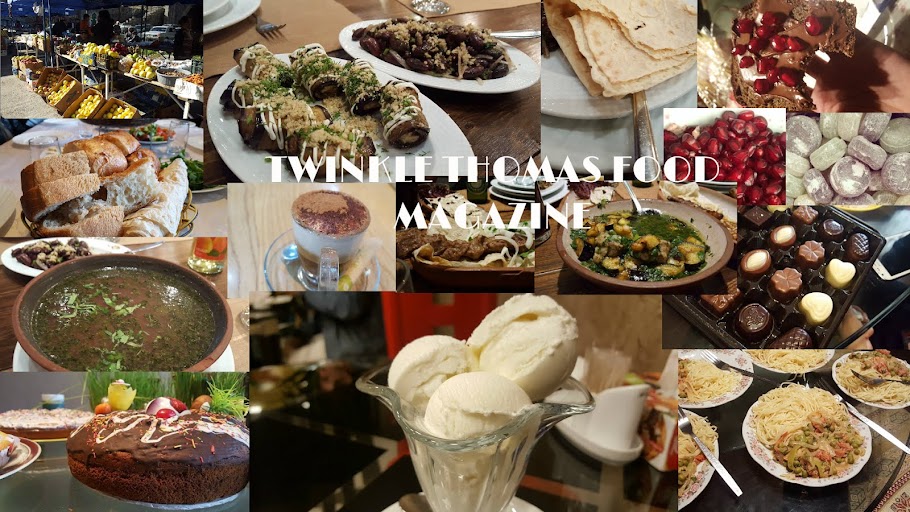 |
| IMAGE CREDIT: SOUMYASHREE CHATTERJEE |
Indian cuisine tends to find 2
vegetables that are very versatile in their use and tend to be used in a
variety of dishes, potato and brinjal (EggPlant). Today’s food journey will take us to the land
of Shivaji Maharaj and serve up a delectable offering laden with spices and
brinjal. The hallmark of maharashtrian cooking is the inherent riot of spices
that the food imbibes, the tickle of tamarind, the heat of chillies, the full
body of grated coconuts all fusing to run root on your taste buds.
Baingan or brinjal as Indian know it is
more commonly known as eggplant in North America and Australia. By origin it is
a form of night shade and hence cousin to tomatoes and potatoes. Interestingly
it is also related to tobacco and hence the seeds taste a bit bitter due to
presence of nicotinoid alkaloids in it. The origin of the name eggplant can be
traced to 1767 and was specifically then used for the white variety. The Dravidian
name vaṟutuṇai, has evolved through other languages to give its various other
names. Sanskrit vātigama, Persian bādingān and Arabic bāḏinjān are some
examples of this evolution. In Europe the Arabic form was further modified into
alberengena and from then on to aubergine as it is commonly called by the
britishers. It can be safely sadi that this is a plant of Asian origin which
has then been introduced to Europe by the Arabs, as late as the 12th
century.
As a vegetable brinjal is found to grow
hanging from vines, and is especially favoured in its bright purple variety. It
has many nutritive distinctions and a source of various nutrients. It is a very
good source of dietary fibre, vitamin B1 and copper. Minerals like manganese
and potassium are also found in good quantities in this vegetable. Vitamin B6,
K, niacin and folate are also found in good quantities in brinjal. Nasunin a
very potent antioxidant and free radical scavenger is found to be available in
brinjal in ample quantities. This helps in protecting the cell membranes from
damage particularly useful in protecting brain cell damage. Chlorogenic acid a
phenolic antioxidant and free radical scavenger is also found in good
quantities in brinjal. Thus brinjal is attributed to contribute to cardio
vascular health, brain functioning, lowering cancer risk and so on, thus making
it a very good addition in daily diet.
But enough of the science of eggplant,
for we don’t cook food only for its nutrient value, we choose to cook a food to
enjoy it as it assaults our senses in a pleasant way. While I haven’t been able
to trace the origins of this dish, there are a few variations of the dish as in
the Punjabi way or the Maharashtrian way. What we chose today is to take the
mahrashtrian way for its extra zing in spices.
Like all gastronomic journeys this one also
starts with gathering of the various ingredients and we will use the following,
to prepare a serve for 5 to 6 people:
- Small brinjals – 1 kilo
- 3 table spoon oil
- 1 medium onion
- 1 medium sized tomato sliced
- 1 tea spoon garlic paste
- 10-12 groundnuts
- 2 tea spoon dried coconut powder
- ½ inch of tamarind
- 1 tea spoon chilli powder
- ½ tea spoon coriander powder
- ¼ tea spoon cumin powder
- 2 tea spoon Marathi meat Masala
- Coriander leaves & green chillies for garnishing
Bharwa baingan is essentially a stuffed
dish, so while we prepare for the dish and collect ingredients, the first point
of concern is the brinjals. We take care to pick the smallest size of the
brinjals available. After thorough washing we carefully slit the brinjals down
the middle but not completely leaving the vegetable essentially whole, just
opened up. The onion is now ground into a paste. Heat the cooking oil in a pan,
and add the onion and the garlic paste. Sauté this till it turns light brown. Now
add the sliced tomatoes, salt to taste and red chilli powder. Sauté further
till the oil separates.
Now grind the groundnuts, coconut
powder, tamarind, Marathi Meat Masala, Coriander powder, cumin powder, red
chilli powder and salt in a mixer. Add a little water to make a paste. Now we
are ready for the actual cooking.
Fill the slit brinjals with the ground
masala, putting even measures of the filling into it, and of course not
excessive quantitites. Now add these stuffed brinjals in the sautéed onion,
garlic & tomato masala and mix well. Cover the lid of the pan and cook on
slow fire (stirring once in a while) till oil starts to separate and the
brinjal becomes soft.
To serve this dish, shift the cooked
bharva baingan in a serving bowl. Garnish with chopped coriander leaves and
slit green chillies. This is ideally enjoyed with hot chapattis just off the
fire.
But before you roll your sleeves to get
cooking, tarry a moment to find out the secret ingredient stolen from my
mother’s kitchen to make this dish reach the next level. My mother tells me
every cook is special, for it is a creation, a fusion of mundane to create
something incredibly different. However when you cook for someone special or
for something special, you want just that little bit more and there is a way to
make it that much more better. Smile your best smile thinking of why you are
cooking the dish, and heap loads of love thinking of whom you are cooking this
for, and see how wonderful the dish turns out to be. So get going. Bon appétit.

No comments:
Post a Comment